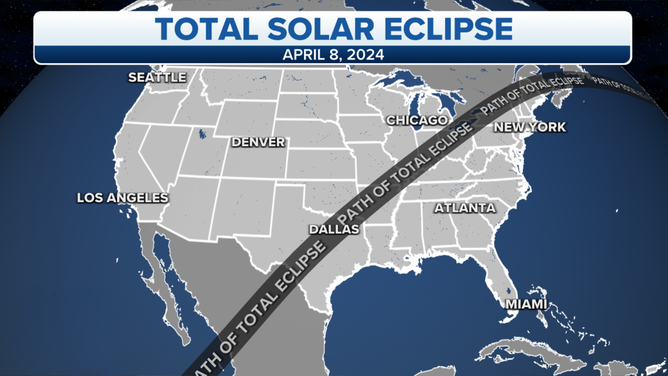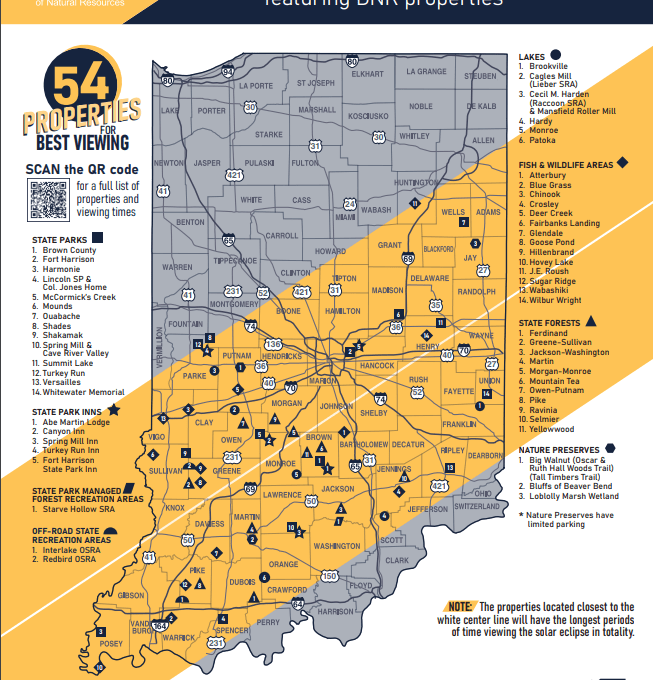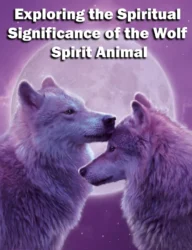The next solar eclipse is April 8, 2024
Start of Partial: Mon, Apr 8, 2024 at 6:27 am HST
Start of Totality: Mon, Apr 8, 2024 at 1:27 pm CDT
End of Totality: Mon, Apr 8, 2024 at 4:35 pm ADT
End of Partial: Mon, Apr 8, 2024 at 4:41 pm EDT
On the 8th of April, 2024, a momentous astronomical occurrence is set to captivate the interest of millions when a complete solar eclipse adorns the heavens. The moon’s shadow will create a fleeting veil of darkness over certain regions of North America, establishing this cosmic event as one of the most eagerly awaited in recent memory. During a brief span of time, daylight will transform into night, unveiling the solar corona that is typically obscured by the sun’s intense brilliance.
This solar eclipse offers a unique chance for individuals along the path of totality, which extends from Mexico to the United States and Canada. Different points along this narrow path will witness total darkness as the moon completely obscures the sun. Experts and fans alike view this event as a wonder of the universe and a crucial opportunity for solar studies and educating the public about the science behind these phenomena.
Solar eclipses occur when the moon passes between the sun and the Earth, casting a shadow on our planet. This celestial event is truly awe-inspiring as it temporarily darkens the sky and allows us to witness the sun’s corona, the outermost layer of its atmosphere. A solar eclipse is a remarkable phenomenon that reminds us of the vastness and beauty of our universe.
Exploring the Phenomenon of Solar Eclipses
Solar eclipses have fascinated people for centuries, evoking a sense of wonder and amazement at the cosmic interplay between the Sun, Moon, and Earth. The intricate science behind these captivating events and their unfolding process is explored in this article, shedding light on the mysteries of their mechanics and occurrence.
Understanding the Fundamentals
A solar eclipse takes place when the Moon moves between the Sun and Earth, casting its shadow on our planet. However, not all solar eclipses are total. Total solar eclipses are extraordinary occurrences where the Moon completely obscures the Sun, creating a momentary darkness in the surrounding area.
The Celestial Ballet
The occurrence of a total solar eclipse is a result of the precise alignment of the Sun, Moon, and Earth. Despite the significant size differences among these celestial bodies, their orbits and distances allow for such alignments to happen, albeit infrequently. The Moon’s orbit around Earth is slightly tilted in relation to Earth’s orbit around the Sun, setting the stage for total solar eclipses to happen only at specific times and locations.
The Lunar Shadow’s Role
During a total solar eclipse, the Moon’s shadow consists of two main parts: the umbra and the penumbra. The umbra is the central, cone-shaped area where the Sun is entirely blocked by the Moon, leading to complete darkness along the path of totality. Surrounding the umbra is the penumbra, where the Sun is partially obscured, resulting in a partial eclipse for observers outside the path of totality..
Types of Solar Eclipses
There are four distinct types of solar eclipses: Total, partial, hybrid, and annular. The specific type of eclipse that individuals are able to witness is determined by the alignment of the Moon with Earth and the Sun, as well as the distance between the Moon and Earth.
Total Solar Eclipse
A total solar eclipse occurs when the Moon passes directly between the Sun and Earth, effectively blocking the Sun’s entire face. Those situated in the center of the Moon’s shadow as it reaches Earth will experience a total eclipse. The sky will darken, resembling the early morning or evening hours. If weather conditions permit, individuals within the path of a total solar eclipse can catch a glimpse of the Sun’s corona, the outer atmosphere that is typically concealed by the Sun’s bright surface. During this type of eclipse, viewers are able to briefly remove their eclipse glasses (which differ from regular sunglasses) while the Moon completely obstructs the Sun. The next total solar eclipse in the United States is scheduled for April 8, 2024.
Annular Solar Eclipse
An annular solar eclipse occurs when the Moon passes between the Sun and Earth, but is positioned at or near its farthest distance from Earth. Due to the Moon’s greater distance, it appears smaller than the Sun and does not completely cover it. Consequently, the Moon appears as a dark disk atop a larger, luminous disk, creating the appearance of a ring encircling the Moon. The next annular eclipse in the United States is anticipated to take place on October 14, 2023.
Partial Solar Eclipse
During a partial solar eclipse, the Moon passes between the Sun and Earth, but the three celestial bodies are not perfectly aligned. As a result, only a portion of the Sun appears to be obscured, forming a crescent shape. Individuals located outside the region covered by the Moon’s inner shadow will observe a partial solar eclipse during a total or annular eclipse.
Hybrid Solar Eclipse
Occasionally, due to the curved surface of the Earth, an eclipse can transition between annular and total as the Moon’s shadow traverses the globe. This phenomenon is referred to as a hybrid solar eclipse.
The Path of Totality

During a solar eclipse, when the Moon’s shadow moves across the Earth, the specific area where the Sun is completely hidden is referred to as the path of totality. In the case of the upcoming 2024 eclipse, this path will stretch across North America, starting from Mexico and extending all the way to Canada. As it passes through, it will have an impact on several states within the United States.
The Concept of Totality During a Solar Eclipse
During a solar eclipse, when the Moon’s shadow moves across the Earth, the specific area where the Sun is completely hidden is referred to as the path of totality. In the case of the upcoming 2024 eclipse, this path will stretch across North America, starting from Mexico and extending all the way to Canada. As it passes through, it will have an impact on several states within the United States.
The 2024 Total Solar Eclipse Path Through North America
The path of the eclipse will pass over a large portion of North America. It is set to start in Mexico and move in a northeast direction, crossing through various states such as Texas, Oklahoma, Arkansas, Missouri, Illinois, Kentucky, Indiana, Ohio, Michigan, Pennsylvania, New York, as well as the New England states of Vermont, New Hampshire, and Maine, before finally finishing in Atlantic Canada.
Date and Time The 2024 Total Solar Eclipse Will Occur
The upcoming total solar eclipse is set to happen on Monday, April 8, 2024. The exact timing of when the eclipse begins and reaches its peak will differ based on where you are. It’s important for observers to check their local times to make sure they don’t miss out on this incredible event. For example, people in eastern regions such as the Atlantic coast can expect the eclipse to start in the early afternoon.
| Location | Partial Eclipse Begins | Total Eclipse Begins | Duration of Totality |
| Atlantic Coast | Early afternoon | Shortly after | 2-3 minutes |
| Southern Ontario | Mid afternoon | Soon after | Around 3 minutes |
| Quebec | Mid afternoon | Within the hour | Approximately 3 minutes |
| Prince Edward Island | Mid afternoon | Within the hour | About 3 minutes |
Best Locations To View The 2024 Total Solar Eclipse
The eclipse’s path will cross over the Pacific, then move across North America before leaving over the Atlantic. Great spots to see the total eclipse are in Southern Ontario, Quebec, and Prince Edward Island. Coastal areas, particularly along the Atlantic coast, will offer amazing views for people in Nova Scotia and Cape Breton.
If you’re not in the path of totality, don’t worry! You’ll still get to witness a partial solar eclipse. However, to truly immerse yourself in the full experience, it’s recommended to travel to a location within the path of totality.
Viewing the Eclipse Safely
When a solar eclipse occurs, safety is paramount. One must utilize proper eye protection to prevent any permanent eye damage, and follow best practices for a safe viewing experience.
Proper Eye Protection
Eclipse Glasses: It is critical to use special-purpose solar filters, commonly known as “eclipse glasses,” designed explicitly for looking at the sun. Regular sunglasses, even those with UV protection, are not safe for observing a solar eclipse. Eclipse glasses must meet the ISO 12312-2 safety standard; one should verify this before use.
- Inspect Glasses: Before use, inspect eclipse glasses for any scratches, holes, or damage. If damaged, they should be discarded.
- Wear Correctly: Wear eclipse glasses over any prescribed eyewear, not under.
Best Practices for Eclipse Viewing
Viewing Duration: During the partial phases of the eclipse, one may look continuously at the sun through eclipse glasses, but one should take breaks to avoid eye strain.
- Avoid Unfiltered Devices: Do not use unfiltered cameras, telescopes, binoculars, or other optical devices with eclipse glasses. Special solar filters must be attached to the front of any such devices.
- Supervision of Children: Ensure that children are supervised when using eclipse glasses to confirm they use them correctly.
Historical and Cultural Impact
Solar eclipses have left a profound mark on human history, shaping cultures and fueling scientific progress. Their rare and dramatic nature has often rendered them significant to societies worldwide.
Eclipses in History
Historically, solar eclipses have acted as catalysts for change and markers for chronology. For instance, the total solar eclipse of 1919 played a crucial role in validating Einstein’s theory of general relativity, marking a pivotal moment in scientific history. Clear documentation of eclipses has also helped modern scientists back-trace the dates of historical events. The famous “Great American Eclipse” of 2017 was not only a spectacle for millions but also a momentous event bolstered by its widespread visibility across the United States, underlining eclipses’ ability to unite people in common experience.
Mythology and Superstitions
Myths and superstitions surrounding solar eclipses are diverse and rich across cultures. In many traditions, solar eclipses were seen as an omen. For example, ancient Chinese folklore interpreted solar eclipses as a celestial dragon consuming the sun, while some Native American cultures viewed them as a time to reflect and cease normal activities. Eclipses often held a dual nature, invoking fear or awe, and sometimes both, which contributed to their cultural significance.
Eclipses have also prompted various cultural rituals. Some historic cultures would make loud noises or perform rituals to scare away the “demon” causing the eclipse. These practices underline the deep-rooted influence of solar eclipses on human belief systems and cultural norms.
Eclipse Photography and Observation
The 2024 Total Solar Eclipse presents a unique opportunity for both amateur and professional photographers, as well as scientists and enthusiasts, to capture and observe one of nature’s most awe-inspiring phenomena.
Capturing the Eclipse
Equipment Readiness: To photograph the eclipse, a camera with a telephoto lens and solar filter is essential to prevent damage to the camera’s sensor and to capture the dramatic changes in lighting. This includes DSLRs, mirrorless cameras, and even smartphones with the appropriate attachments.
Technique: Eclipse photography requires planning. Photographers need to be familiar with the stages of the eclipse and adjust their exposure settings accordingly. An eclipse cartographer, Michael Zeiler emphasizes the importance of staying mobile due to weather unpredictability. His Great American Eclipse website provides valuable information and an interactive Google map for planning the best photographic location.
Scientific Studies and Eclipse Chasing
Observation for Science: Eclipses are not just spectacular shows, they are also scientific opportunities. Observations during totality can provide valuable data on the sun’s corona, solar flares, and even insights into solar physics. Resources from NASA’s scientific studies can guide observers on what phenomena are crucial to capture and study.
Eclipse Chasing: A subset of enthusiasts known as eclipse chasers travel globally to witness solar eclipses. These individuals often contribute to science through meticulous planning and observation, using tools such as interactive maps and eclipse photography guides. They share findings and experiences, enriching the scientific and observational community.
Future Eclipses and Phenomena
Eclipse enthusiasts and skywatchers can anticipate significant celestial events in the near future, including the widely discussed total solar eclipse and a series of lunar eclipses that present opportunities for observation.
Anticipating the Next Total Solar Eclipse
The next total solar eclipse is scheduled for April 8, 2024. This rare and dramatic event will be visible across North America, from the Pacific Coast through the South Pacific Ocean, Mexico, and into South America. The eclipse’s path of totality promises darkness in broad daylight as the moon obscures the sun. One city, Carbondale in Illinois, has the distinctive honor of witnessing this phenomenon, as it also experienced totality during the previous North American solar eclipse in 2017.
Other Celestial Events to Observe
In addition to solar eclipses, other celestial events draw observers’ attention:
- Lunar Eclipses: Often visible from a larger area of the world, lunar eclipses occur when the Earth positions itself between the sun and the moon. Unlike solar eclipses, lunar eclipses can be safely viewed without specialized equipment, and several are expected to occur before and after the 2024 solar eclipse.
- Visibility in Europe: While the 2024 total solar eclipse will not be visible from Europe, Europeans can look forward to future eclipses and other astronomical phenomena that will be visible from their continent.
Local Celebrations and Events
The 2024 Solar Eclipse presents a unique astronomical event that will be marked by various local celebrations and events across multiple cities, with communities embracing the spring weather to engage in both traditional and innovative festivity forms.
Community Gatherings
In Texas, cities like Austin, Fort Worth, and Dallas are gearing up for the eclipse by organizing community gatherings that provide locals and visitors alike with a communal viewing experience. Austin is known for its creative culture and plans to host open-air viewings in parks and public spaces, allowing people to enjoy the spring weather while witnessing the eclipse.
- Fort Worth and Dallas are similarly preparing public events, with local astronomy clubs leading the way in providing telescopes and expert guidance to enhance the viewing experience.
Eclipse Themed Activities
A variety of eclipse-themed activities are planned throughout the eclipse’s path. In Sinaloa, Mexico, the Portal Eclipse Festival integrates music with stargazing, scheduled for April 5-9, thus combining the vibrant local culture with the celestial celebration. Additionally, the city of Torreón will offer cultural events that highlight the significance of the solar eclipse within Mexican heritage.
- Little Rock, Arkansas plans to capitalize on the event by hosting educational workshops and science fairs that emphasize the eclipse, providing a mix of both entertainment and learning opportunities.
- Many local businesses and organizations throughout the region will also offer eclipse-themed merchandise and food, contributing to the day’s festive atmosphere.
Frequently Asked Questions
This section provides succinct answers to common questions about the upcoming 2024 solar eclipse.
1. What states will see the solar eclipse in 2024?
The total solar eclipse of 2024 will be visible in states stretching from Texas to Maine.
2. What is the path of totality of the solar eclipse 2024?
The path of totality for the 2024 solar eclipse will traverse North America, beginning in Mexico, entering through Texas, and continuing northeastward to Maine before moving towards the Atlantic.
3. Will it go dark during the eclipse?
During the total solar eclipse, areas along the path of totality will experience darkness akin to early dawn or dusk as the Moon fully covers the Sun.
4. When was the previous occurrence of a total solar eclipse visible in this region?
The previous total solar eclipse visible in parts of this region occurred in 2017.
5. Where is the best place to see the solar eclipse 2024?
The best place to view the 2024 solar eclipse will be along the path of totality where viewers can experience the full effect of the eclipse.
6. During the solar eclipse of 2024, which celestial bodies will be observable and under what conditions?
During the 2024 eclipse, viewers in the path of totality may be able to see planets and brighter stars, typically not visible when the Sun is in the sky, for a short duration.


